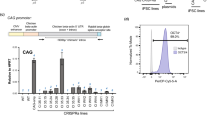Abstract
Dedifferentiation of more mature cell types into multipotential cells is of interest since they have potential regenerative capacity. Reversine has the ability to induce the reversion of adult cells to a multipotent state from which they can re-differentiate into other cell types when induced by appropriate culture conditions. To evaluate the dedifferentiation caused by short-term treatment with reversine, NIH-3T3 fibroblast cells were cultured with reversine and then transferred to induction media for osteogenic and adipogenic differentiation. Furthermore, genome wide transcriptomic analysis was performed to observe the trends in gene expression associated with short-term reversine treatment. We found that reversine-treated fibroblast cells transdifferentiated into osteoblasts and that treatment induced some important genes including Ids, Cp, Btg2, Nrg1, Npas4, and Has2. These genes are involved in the growth and development of different organs, protein binding, transcriptional regulation, and other major functions. Our findings suggest that reversine-mediated induction of some genes or transcription factors may alter the status of differentiated cells and cause dedifferentiation. These data will provide a platform to investigate the key epigenetic factors that increase cellular plasticity and facilitate further differentiation to other cell types.
Similar content being viewed by others
References
Eguizabal, C., Montserrat, N., Veiga, A. & Izpisua Belmonte, J.C. Dedifferentiation, transdifferentiation, and reprogramming: future directions in regenerative medicine. Semin. Reprod. Med. 31, 82–94 (2013).
Jopling, C., Boue, S. & Izpisua Belmonte, J.C. Dedifferentiation, transdifferentiation and reprogramming: three routes to regeneration. Nat. Rev. Mol. Cell. Biol. 12, 79–89 (2011).
Chen, S., Zhang, Q., Wu, X., Schultz, P.G., & Ding, S. Dedifferentiation of lineage-committed cells by a small molecule. J. Am. Chem. Soc. 126, 410 (2004).
Anastasia, L. et al. Reversine-treated fibroblasts acquire myogenic competence in vitro and in regenerating skeletal muscle. Cell. Death Differ. 13, 2042 (2006).
Lee, E.K. et al. Reversine increases the plasticity of lineage-committed cells toward neuroectodermal lineage. J. Biol. Chem. 284, 2891–2901 (2009).
Pikir, B.S., Susilowati, H., Hendrianto, E. & Abdulrantam, F. Reversin increase the plasticity of bone marrow-derived mesenchymal stem cell for generation of cardiomyocyte in vitro. Acta Med. Indones 44, 23–27 (2012).
Conforti, E. et al. Reversine increases multipotent human mesenchymal cells differentiation potential. J. Biol. Regul. Homeost Agents 25, S25–S33 (2011).
Miyoshi, K. et al. Beneficial effects of reversine on in vitro development of miniature pig somatic cell nuclear transfer embryos. J. Reprod. Dev. 56, 291–296 (2010).
Chen, S. et al. Reversine increases the plasticity of lineagecommitted mammalian cells. Proc. Natl. Acad. Sci. USA 104, 10482 (2007).
Kim, Y.K. et al. Reversine stimulates adipocyte differentiation and downregulates Akt and p70(s6k) signaling pathways in 3T3-L1 cells. Biochem Biophys Res. Commun. 358, 553–558 (2007).
Qu, G. & von Schroeder, H.P. Preliminary evidence for the dedifferentiation of RAW 264.7 cells into mesenchymal progenitor-like cells by a purine analog. Tissue Eng. Part A. 18, 1890–1901 (2012).
Li, R., Zhu, S., He, X. & Xie, Z. Reversine inhibits spontaneous synaptic transmission in cultured rat hippocampal neurons. Cell. Biol. Int. 31, 540 (2007).
Tsai, R.Y., Kittappa, R. & McKay, R.D. Plasticity, niches, and the use of stem cells. Dev. Cell. 2, 707 (2002).
Yu, J. et al. Induced pluripotent stem cell lines derived from human somatic cells. Science 318, 1917 (2007).
Ding, S., Gray, N.S., Wu, X., Ding, Q. & Schultz, P.G. A combinatorial scaffold approach toward kinase-directed heterocycle libraries. J. Am. Chem. Soc. 124, 1594 (2002).
Muda, M. et al. The dual specificity phosphatases M3/6 and MKP-3 are highly selective for inactivation of distinct mitogen-activated protein kinases. J. Biol. Chem. 271, 27205–27208 (1996).
Moro, E. et al. A novel functional role of iduronate-2-sulfatase in zebrafish early development. Matrix. Biol. 29, 43–50 (2010).
Mo, X.Y. et al. Molecular characterization, expression pattern and association analysis of the porcine BTG2 gene. Mol. Biol. Rep. 38, 4389–4396 (2011).
Falconi, D. & Aubin, J.E. LIF inhibits osteoblast differentiation at least in part by regulation of HAS2 and its product hyaluronan. J. Bone. Miner. Res. 22, 1289–1300 (2007).
Zarjou, A. et al. Ferritin prevents calcification and osteoblastic differentiation of vascular smooth muscle cells. J. Am. Soc. Nephrol. 20, 1254–1263 (2009).
Jullien, N. et al. Downregulation of ErbB3 by Wnt3a contributes to wnt-induced osteoblast differentiation in mesenchymal cells. J. Cell. Biochem. 113, 2047–2056 (2012).
Ooe, N., Saito, K., Mikami, N., Nakatuka, I. & Kaneko, H. Identification of a novel basic helix-loop-helix-PAS factor, NXF, reveals a Sim2 competitive, positive regulatory role in dendritic-cytoskeleton modulator drebrin gene expression. Mol. Cell. Biol. 24, 608–616 (2004).
Bogoyevitch, M.A., Boehm, I., Oakley, A., Ketterman, A.J. & Barr, R.K. Targeting the JNK MAPK cascade for inhibition: basic science and therapeutic potential. Biochim. Biophys. Acta 1697, 89 (2004).
Wang, Y., Ji, H.X., Xing, S.H., Pei, D.S. & Guan, Q.H. SP600125, a selective JNK inhibitor, protects ischemic renal injury via suppressing the extrinsic pathways of apoptosis. Life Sci. 80, 2067 (2007).
Author information
Authors and Affiliations
Corresponding author
Additional information
These authors contributed equally to this work.
Rights and permissions
About this article
Cite this article
Mandal, C., Baek, M.N., Jung, K.H. et al. Gene expression profile associated with the reversine-mediated transdifferentiation of NIH-3T3 fibroblast cells into osteoblasts. BioChip J 7, 278–287 (2013). https://doi.org/10.1007/s13206-013-7311-8
Received:
Accepted:
Published:
Issue Date:
DOI: https://doi.org/10.1007/s13206-013-7311-8




